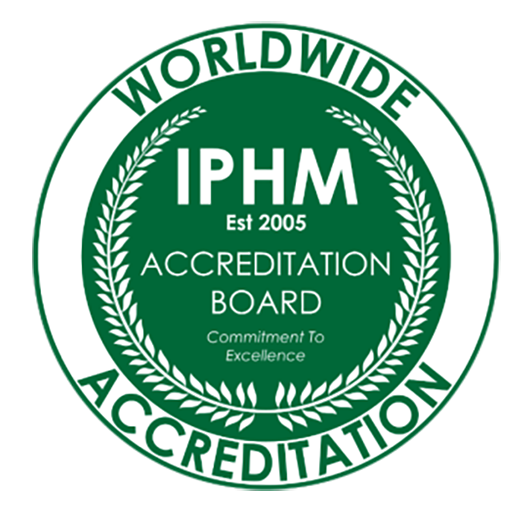This advanced profile for Polycystic Ovary Syndrome (PCOS) includes tests for diabetes, cholesterol as well as hormones, thyroid function and AMH (anti-mullerian hormone).
Polycystic Ovary Syndrome (PCOS) is a condition in which your ovaries are enlarged and contain many fluid-filled sacs around the eggs. It is quite common and affects normal ovarian function. A diagnosis is based on medical history, symptoms and high levels of male hormones (androgens).
Symptoms include irregular or absent periods or excess facial hair growth, thinning hair, and difficulty getting pregnant.
Our Advanced Polycystic Ovary Syndrome (PCOS) Blood Test contains a comprehensive hormone panel, including tests for the hormone’s testosterone, FSH, and LH. It also measures anti-Mullerian hormone (which can be raised if you have PCOS) and prolactin (which can give insights into your fertility). Our advanced profile also includes tests for thyroid function, diabetes and cholesterol, all of which can be affected by polycystic ovaries.
Avoid fatty foods for eight hours before your test, you do not need to fast. Take this test two to five days after the start of your period, ideally on day three. It can be taken any time if you do not have periods. Hormonal contraception can affect this test, taking a break from this and using barrier contraception will give more accurate results. If you use hormone gels, pessaries, patches, or tablets, we strongly recommend selecting our intravenous blood test to minimise contamination. Do not take biotin supplements for two days before this test, discuss this with your doctor if it is prescribed.
Cholesterol is an essential fat (lipid) in the body. Although it has a bad reputation it has some important functions, including building cell membranes and producing a number of essential hormones including testosterone and oestradiol. Cholesterol is manufactured in the liver and also comes from the food we eat. Although there are a number of different types of cholesterol, the two main components of total cholesterol are HDL (high density lipoprotein) which is protective against heart disease and LDL (low density lipoprotein) which, in high levels, can contribute to cardiovascular disease. Your total cholesterol result on its own is of limited value in understanding your risk of heart disease; high levels of HDL cholesterol can cause a raised total cholesterol result but may actually be protective against heart disease. Equally, you can have a normal total cholesterol level but have low levels of protective HDL cholesterol. The most important factors are how much HDL and LDL cholesterol you have, and what proportion of your total cholesterol is made up of protective HDL cholesterol. We give a detailed breakdown of the components of your total cholesterol in the rest of this cholesterol profile.
LDL cholesterol (low-density lipoprotein) is a molecule made of lipids and proteins which transports cholesterol, triglycerides and other fats to various tissues throughout the body. Too much LDL cholesterol, commonly called ‘bad cholesterol’, can cause fatty deposits to accumulate inside artery walls, potentially leading to atherosclerosis and heart disease.
Your total cholesterol is broken down into 2 main components; HDL (good) cholesterol and LDL (bad). There are more types of harmful cholesterol in your blood than just LDL – these include VLDL (very low-density lipoproteins) and other lipoproteins which are thought to be even more harmful than LDL cholesterol. Non-HDL cholesterol is calculated by subtracting your HDL cholesterol value from your total cholesterol. It therefore includes all the non-protective and potentially harmful cholesterol in your blood, not just LDL. As such, it is considered to be a better marker for cardiovascular risk than total cholesterol and LDL cholesterol. The recommended level of non-HDL cholesterol is below 4 mmol/L.
HDL cholesterol (high-density lipoprotein) is a molecule in the body which removes cholesterol from the bloodstream and transports it to the liver where it is broken down and removed from the body in bile. HDL cholesterol is commonly known as ‘good cholesterol’.
The cholesterol/HDL ratio is calculated by dividing your total cholesterol value by your HDL cholesterol level. It is used as a measure of cardiovascular risk because it gives a good insight into the proportion of your total cholesterol which is good (i.e. high-density lipoprotein HDL). Heart disease risk tools (such as QRisk) use the cholesterol/HDL ratio to calculate your risk of having a heart attack.
Triglycerides are a type of fat (lipid) that circulate in the blood. After you eat, your body converts excess calories (whether from fat or carbohydrates) into triglycerides which are then transported to cells to be stored as fat. Your body then releases triglycerides when required for energy.
Hemoglobin A1c (HbA1c), also known as glycated hemoglobin, is a longer-term measure of glucose levels in your blood than a simple blood glucose test. Glucose attaches itself to the hemoglobin in your red blood cells, and as your cells live for around 12-16 weeks, it gives us a good indication of the average level of sugar in your blood over a 3-month period.
Follicle Stimulating Hormone (FSH) is produced in the pituitary gland and is important for women in the production of eggs by the ovaries and for men for men in the production of sperm. In the first half of the menstrual cycle in women, FSH stimulates the enlargement of follicles within the ovaries. Each of these follicles will help to increase oestradiol levels. One follicle will become dominant and will be released by the ovary (ovulation), after which follicle stimulating hormone levels drop during the second half of the menstrual cycle. In men, FSH acts on the seminiferous tubules of the testicles where they stimulate immature sperm cells to develop into mature sperm.
Oestradiol is a female steroid hormone, produced in the ovaries of women and to a much lesser extent in the testes of men. It is the strongest of three oestrogens and is responsible for the female reproductive system as well as the growth of breast tissue and bone thickness. In pre-menopausal women, oestradiol levels vary throughout the monthly cycle, peaking at ovulation. In women, oestradiol levels decline with age, culminating with the menopause when the ovaries stop producing eggs. Low oestradiol can cause many symptoms associated with the menopause, including hot flushes, night sweats and mood swings. Low oestradiol can also cause osteoporosis.
Testosterone is a hormone that causes male characteristics. For men, it helps to regulate sex drive and has a role in controlling bone mass, fat distribution, muscle mass, strength and the production of red blood cells and sperm. Testosterone is produced in the testicles of men and, in much smaller amounts, in the ovaries of women. Testosterone levels in men naturally decline after the age of 30, although lower than normal levels can occur at any age and can cause low libido, erectile dysfunction, difficulty in gaining and maintaining muscle mass and lack of energy. Although women have much lower amounts of testosterone than men, it is important for much the same reasons, playing a role in libido, the distribution of muscle and fat and the formation of red blood cells. All laboratories will slightly differ in the reference ranges they apply because they are based on the population they are testing. The normal range is set so that 95% of men will fall into it. For greater consistency, we use the guidance from the British Society for Sexual Medicine (BSSM) which advises that low testosterone can be diagnosed when testosterone is consistently below the reference range, and that levels below 12 nmol/L could also be considered low, especially in men who also report symptoms of low testosterone or who have low levels of free testosterone.
Most testosterone circulating in the blood is bound to proteins, in particular SHBG and albumin; only 2-3 % of testosterone is free and available to cells. This test uses an algorithm to calculate the level of free or unbound testosterone in relation to total testosterone, SHBG and albumin.
Anti-Mullerian Hormone, or AMH, is a hormone produced by the ovaries. In particular, it is produced by the follicles which contain eggs within the ovary. Levels can indicate how high or low a woman’s ovarian reserve is. Anti Mullerian Hormone is not routinely measured in men. It may be used by specialist fertility clinics in assessing sperm production.
The Testosterone/Cortisol (T:C) ratio is a marker which shows promise in assessing whether athletes are recovering well after intense training. Testosterone is an anabolic hormone which helps to build muscle, produce red blood cells and increase aerobic metabolism in muscles. Cortisol is a catabolic hormone working antagonistically with testosterone, inhibiting protein synthesis and blocking anabolic signalling. The T:C ratio is more sensitive to the stresses of training than either measure alone. Over time it can be trended to see how well you are recovering.
Prolactin is a hormone which is produced in the pituitary gland and plays a role in reproductive health. Its primary purpose is to stimulate milk production after childbirth, and in pregnant and breastfeeding women prolactin levels can soar.
Total Protein represents the sum of the protein’s albumin and globulin in your blood. Albumin and globulin have a range of functions including keeping blood within vessels, transporting nutrients and fighting infection. Abnormal levels can indicate malnutrition as well as a liver or kidney disorder.
Albumin is a protein which is made mainly in the liver. It helps to exert the osmotic pressure which holds water within the blood. It also helps carry nutrients and medications and other substances through the blood and is important for tissue growth and healing. Albumin also carries hormones around the body, therefore measuring the amount of albumin in the blood can help us calculate how much hormone is available to your tissues.
Globulin is an umbrella term for a set of different proteins that the immune system and the liver produce. Certain globulins bind with haemoglobin while others transport metals, such as iron, in the blood. Additionally, there is a certain type of globulin known as an immunoglobulin, (another name for an antibody) which helps to fight infection in the body.
SHBG (sex hormone binding globulin) is a protein which transports the sex hormones (testosterone, oestrogen and dihydrotestosterone (DHT)) in the blood. Hormones which are bound to SHBG are inactive which means that they are unavailable to your cells. Measuring the level of SHBG in your blood gives important information about your levels of free or unbound hormones which are biologically active and available for use.
Thyroid stimulating hormone (TSH) is produced in the pituitary gland in order to regulate the production of thyroid hormones thyroxine (T4) and triiodothyronine (T3) by the thyroid gland. If thyroid hormones in the blood are low, then more TSH is produced to stimulate the thyroid gland to produce more of them. If thyroid hormone levels are high, then the pituitary produces less TSH to slow the production of thyroid hormones. If TSH is too high or too low, it normally signifies that there is a problem with the thyroid gland which is causing it to under or over produce thyroid hormones. Sometimes a disorder of the pituitary gland can also cause abnormal TSH levels.


Vita Health Clinic Ltd 2023. Company registered number: 15275009. Registered Address: 22a Park Road, Bingley, West Yorkshire, BD16 4JD
Financial Conduct Authority, registration number 978517. Credit is subject to status.
Get in touch by making inquiries on services or products you’d like to know more about or compare.
Let’s have a brief overview so we can help you to our best capacity.